Why Winter Tires Are Essential in Colder Climates
A day at Bridgestone’s winter driving school demonstrates why you should consider changing your treads in step with the seasons.
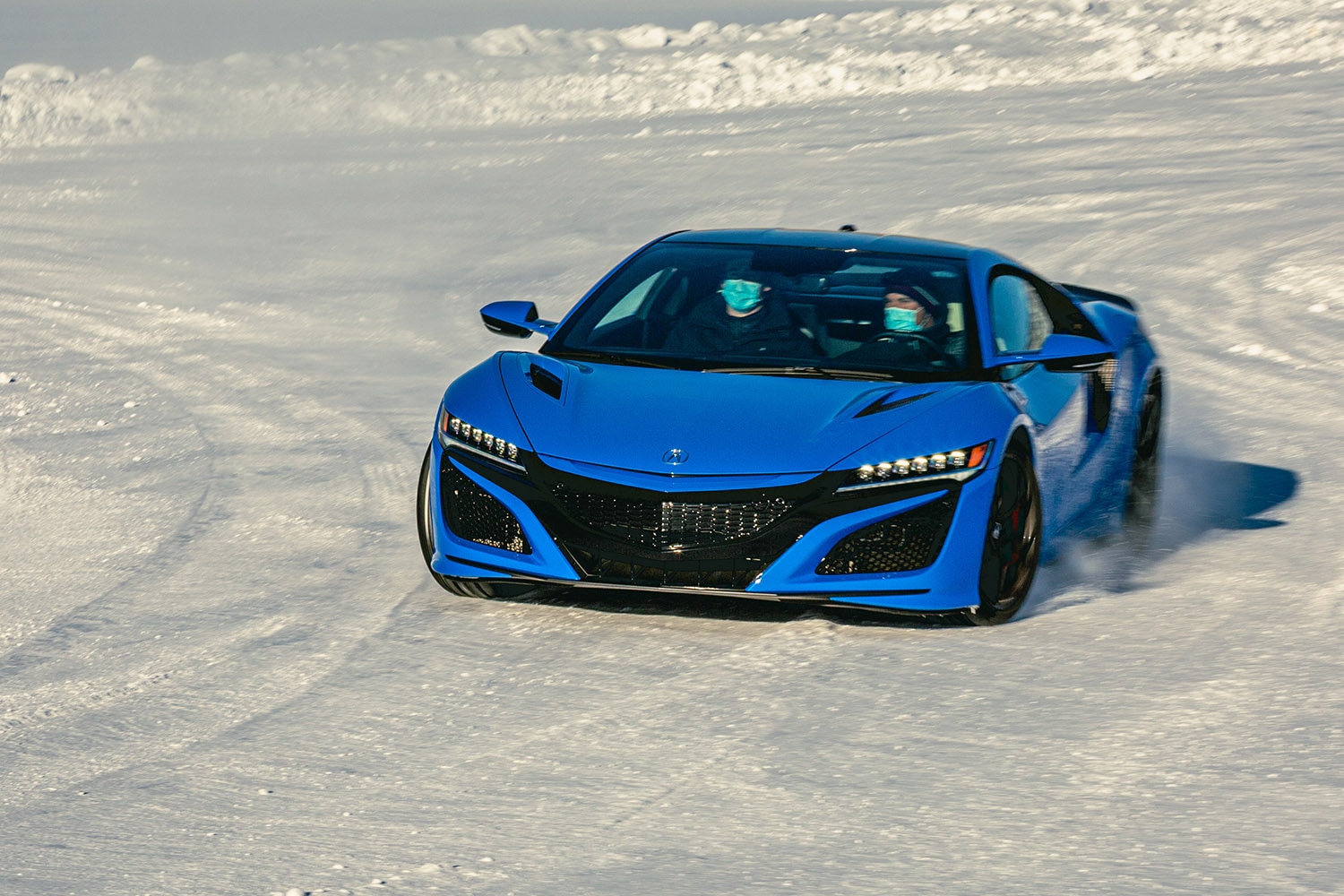 Manuel Carrillo III/Capital One
Manuel Carrillo III/Capital One
Tires are arguably the most important component of any car, truck, or SUV, and yet, drivers rarely think about their treads. That’s especially true for winter tires. Although they can dramatically increase a vehicle's performance in icy conditions, a staggering majority of motorists forgo using cold-weather rubber. According to recent research from tire manufacturer Bridgestone, "54% of drivers who live in winter weather regions have lost control due to snow and ice, yet only 28% equip their vehicles with winter tires."
Those figures are alarming, considering a road covered in fresh or packed snow offers less than half the grip of a smooth, dry, and paved (ideal) surface. Drive down asphalt covered with ice, and you’re working with roughly a quarter of the ideal road’s grip, at most.
Having lived in Southern California for 98% of my life, the other 2% spent living in Sydney, Australia, and Bali, you could safely say I’m less than familiar with that white stuff that falls from the sky, especially when it comes to driving through it.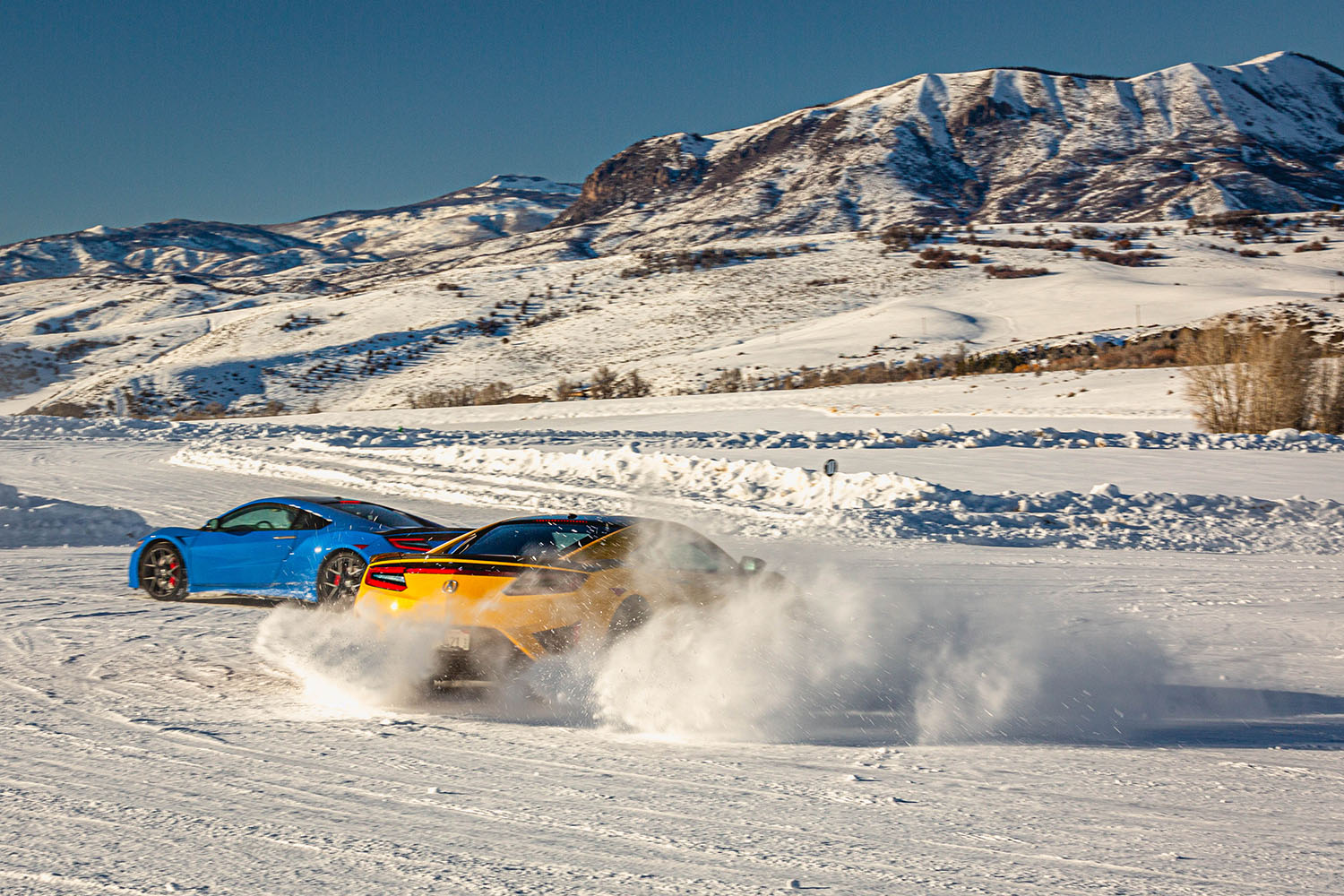 Manuel Carrillo III
Manuel Carrillo III
Driving school or winter hooning wonderland?
Always on a mission to improve my car-control competence, I jumped at the opportunity when Bridgestone invited me to attend its winter driving experience in Steamboat Springs, Colorado. Like Steamboat’s world-class ski and snowboard slopes, Bridgestone’s snow course is also world-class. It’s the largest purpose-built facility of its kind in North America, boasting 11 turns over the course of .96 miles. Other track features include a 300-foot skidpad and more than 30 feet of elevation change.
If that wasn't enough to get excited about, Acura brought out a fleet of NSX supercars for flinging about the snow. Ideally, that would have been my only car to test for the entire day, but Bridgestone is running a school—not a fantasy. Still, the "regular" car I used for most of the modules is no slouch. The Acura MDX three-row, midsize, luxury SUV is one of the best in its class, and like its exotic NSX sibling, was also a joy to drive on the frozen track.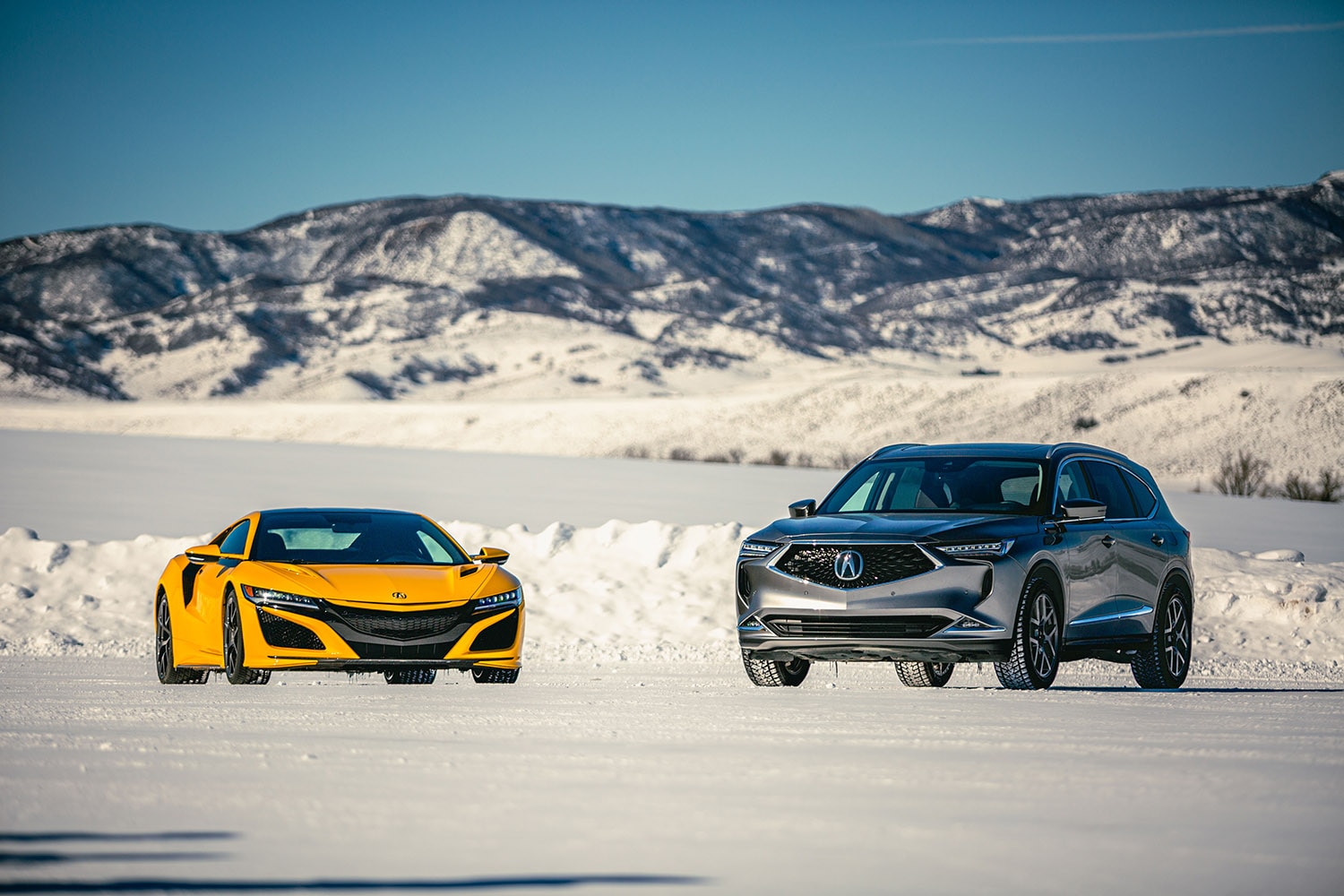 Manuel Carrillo III
Manuel Carrillo III
Winter tires versus all-season tires: the real-world differences
I began my training with a pair of MDXs. One was outfitted with Bridgestone’s Blizzak DM-V2 winter truck and SUV tires. The other with Bridgestone Alenza AS Ultra all-season truck/SUV treads. Apparent immediately were the roadholding differences between the winter and all-season rubber. Yes, all-season tires can handle duty year-long, but they're never going to grip snow as well as dedicated winter treads.
I’ve understood this, in theory, for many years, but experiencing the roadholding differences first-hand was eye-opening. By the seat of my pants, the all-season Alenzas provided roughly 70% of the Blizzaks' grip. On track, that meant squashing the brake pedal a few car lengths earlier when slowing for turns. Once in the corners, I had to travel what seemed like 30% slower on the Alenzas versus the Blizzaks.
Don’t get me wrong, Alenzas are high-quality, all-season treads that boast an 80,000-mile warranty and a high-silica compound for added winter performance. Still, they’re generalist tires that will never be as capable as ones engineered for specific weather like the Blizzaks. Now, if you’re wondering, all the MDXs I tested were equipped with Acura’s torque-vectoring Super Handling All-Wheel Drive (SH-AWD), which is a great system, but compared with front-wheel drive, SH-AWD is mostly irrelevant if you’re using rubber that struggles to hold the road.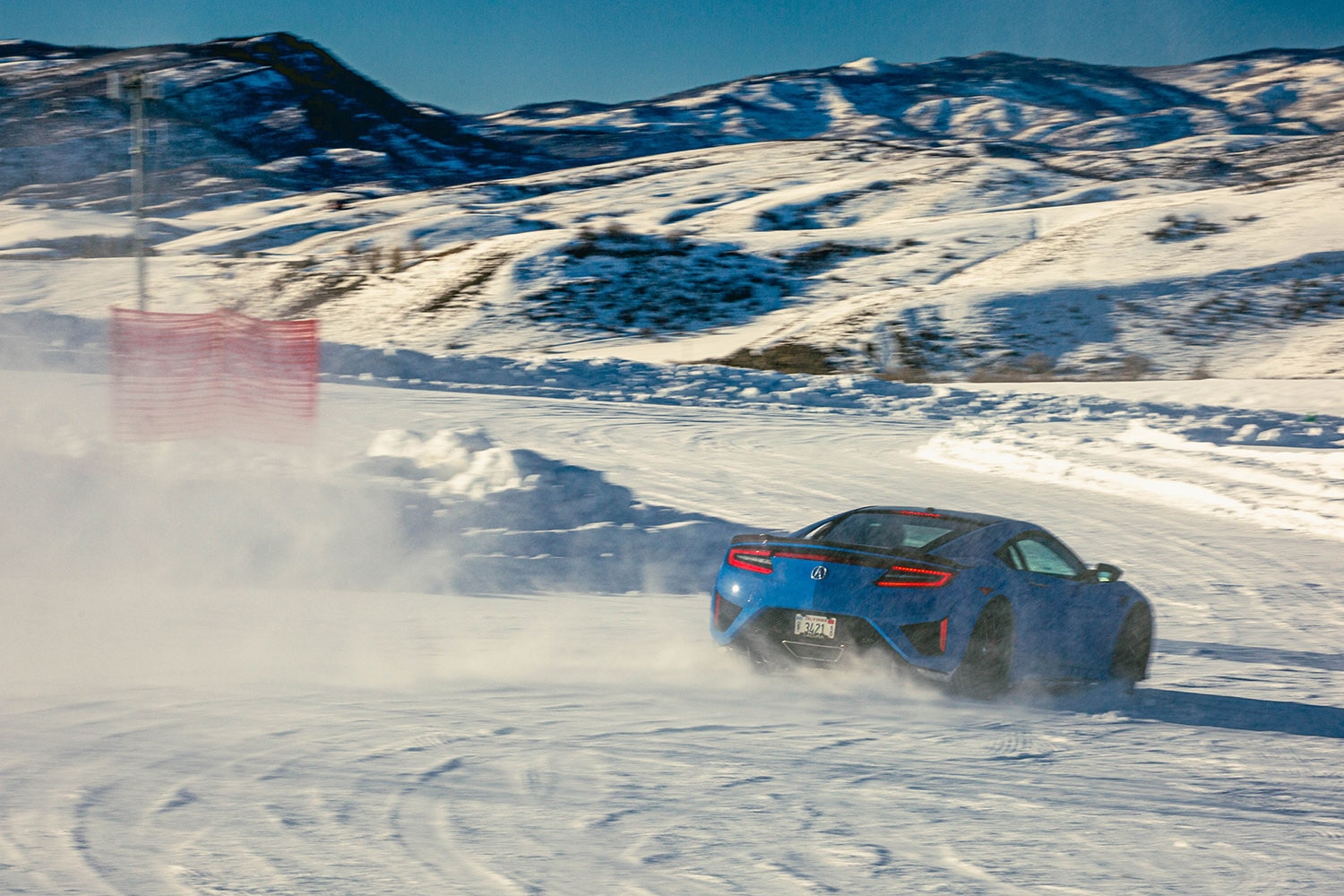 Manuel Carrillo III
Manuel Carrillo III
If your tires have no traction, you might as well have no engine
Let’s address a common misconception that AWD is your ticket to confident and capable all-weather motoring. If your car can drive all four of its wheels, but none of them has traction, then you might as well be driving a car without an engine. Your tire’s contact patch is the be-all, end-all of most of your vehicle’s performance capabilities. Without tires that grip, you’re going nowhere.
But not everyone can throw on a set of Blizzaks as soon as the roads turn icy. There are those of us who are occasionally going to be caught in the snow with all-season rubber. The good news is that the passage of time means both winter and all-season tires improve throughout their respective generations. Bridgestone demonstrated that point by letting me behind the wheel of an NSX fitted with Potenza RE980AS ultra-high-performance, all-season tires.
Granted, I would have rather had the NSX on Blizzaks, but the all-season Potenzas were the surprise of the day. Braking and acceleration performance felt similar to the all-season Alenzas I’d tested on the MDX earlier, but the Potenza’s cornering and slalom performance was more on par with the Blizzaks. I’m thinking some of this has to do with the NSX’s much lower center of gravity and curb weight, and I would have loved a chance at A-B testing to verify this. I smile at the idea of how much faster I could’ve gone with winter tires, but let that be the ultimate takeaway of why winter tires are better for winter driving. 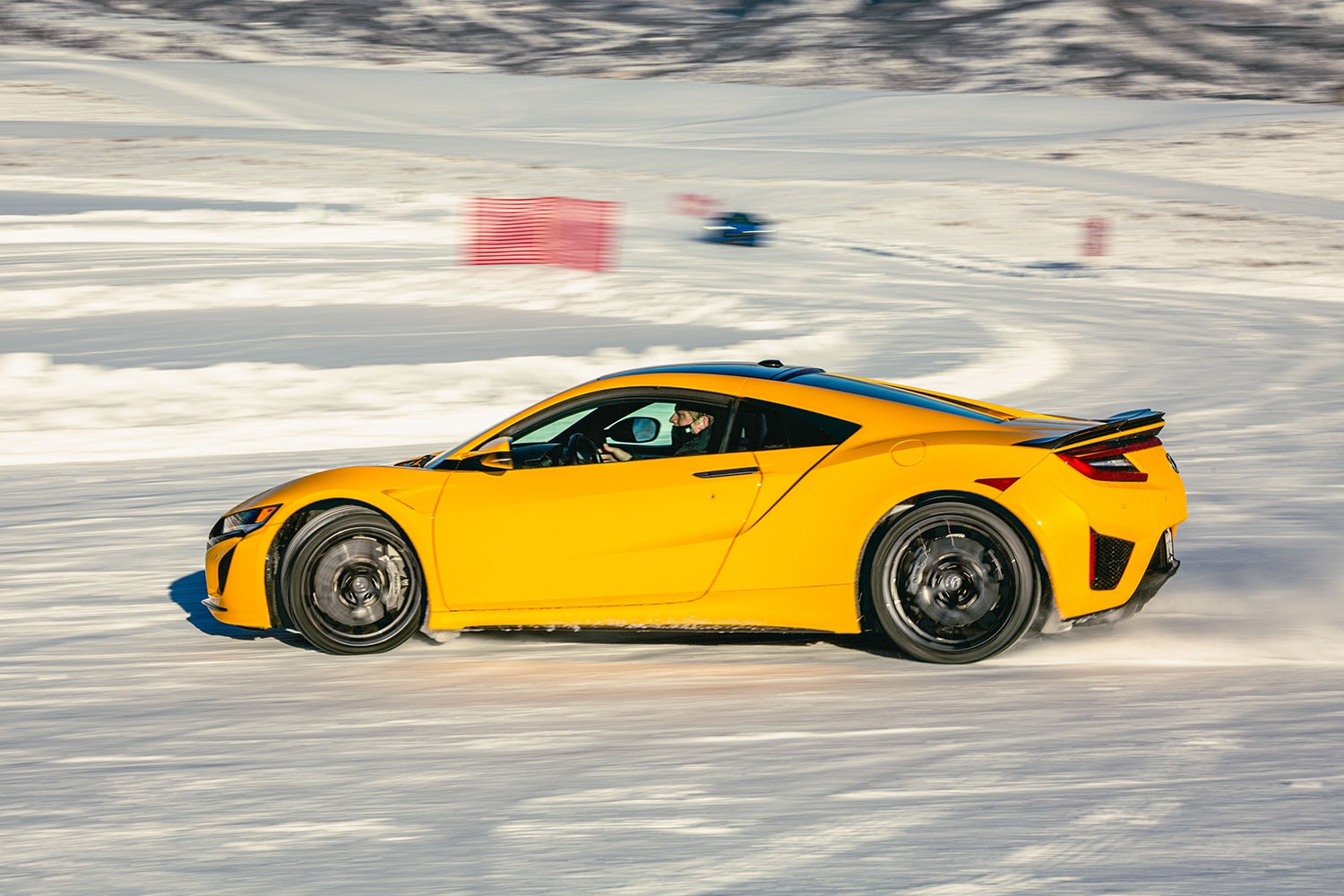 Manuel Carrillo III
Manuel Carrillo III
Winter tires in winter conditions mean more control and driver confidence
No matter what you’re trying to achieve in winter conditions—a quicker lap time around an ice track in your AWD supercar, or safer and more sure-footed performance on the snow in your three-row, luxury crossover—your car, truck or SUV is going to execute your inputs more accurately and faithfully when shod in winter tires. That could mean anything from more daily driving satisfaction to the relief of having stopped just in time for the pedestrian who walked into your path out of nowhere. So, it turns out that tires have a huge impact on how you feel behind the wheel. Pretty impressive for something often overlooked.
Written by humans.
Edited by humans.
 Manuel Carrillo III
Manuel Carrillo IIIThough he's worked within every facet of automotive media, Manuel is happiest in front of the camera. Before joining Capital One, he cohosted Seduced by Speed for Motor Trend. Prior to that, he was automotive reviews editor at CNET. Over his career, he's contributed features to publications such as DUB Magazine, Motor1, Motor Authority, and Robb Report, so adventures like driving house-priced automobiles in Sicily or rubbing elbows with the rich and famous is well within the parameters of a "typical day at the office."
Related articles
View more related articles